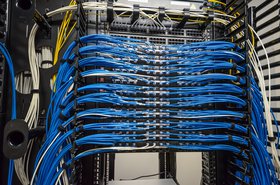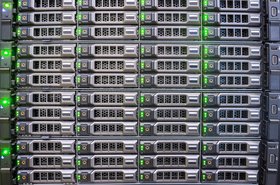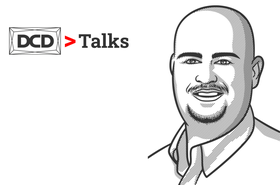For some businesses, the days of dedicating in-house time and resources to data center space may be fading.
Many enterprises are increasingly opting to depend on external data center experts, known as colocation facilities, whose primary focus is to handle data center complexities, comply with sustainability and efficiency requirements, and effectively handle and mitigate risks.
According to market research firm BlueWeave Consulting, the global data center colocation market expanded to $51.25 billion the previous year – and anticipates a substantial compound annual growth rate (CAGR) of 15.65 percent by 2029, projecting a valuation of $195.25 billion. This represents a remarkable 280 percent surge in a mere seven years.
With the increasing demand for data center services, challenging tasks lie ahead for colocation data centers. Is your colocation site ready for what’s to come? Finding the right data center partner is key. Here are five examples of how the right partner can help you serve clients in new ways, generate more profit and create new revenue streams.
1) Act as your personal data center consultant
When enterprises move into a colocation space, they don’t always know what they want or how to set up their data center infrastructure – especially small and mid-size companies. As a result, they may ask for help with a wide array of networking services and support. Are you prepared to provide what they need?
While you act as their advisor, the data center partner you work with should be able to act as your advisor so you can give your clients whatever they need.
Consider data center design, for example. A partner can help you create a “menu” of choices for things like enclosures, fiber assemblies and patch panels, making it fast and easy for your customers to understand the options you provide and make the right choice.
2) Manage your inventory
To respond to client needs and set up new customers quickly, colocation sites need readily available inventory – but managing it can be costly and time-consuming.
Some data center partners will carry your inventory burden, creating a tailored, pre-approved list of products you can pull from as needed and billing you accordingly. They can make sure you always have what you need to support one location – or several – by increasing stock count for your key products.
3) Support quick-turn spaces
Quick turnaround is often needed on key infrastructure components like fiber assemblies to meet client expectations and minimize downtime.
If you deploy assemblies often, for example, verify that your data center partner can turn them around quickly whenever you need them – according to an agreed-upon timeline – so you can quickly set up racks and cages.
Data center ready solutions can also help you work faster. Fully configured pre-installed cabinets with pre-installed copper, fiber and accessories (cable management, power distribution, etc.) that can be ordered with a single part number. This makes ordering, unpackaging and deployment much quicker.
4) Standardize your solutions to leverage purchasing power
As colocation services expand, it becomes too easy to let site managers make siloed decisions about things like power and network connectivity.
But pooling your resources and emphasizing standardization can leverage purchasing power and reduce costs by making sure you don’t purchase what you may be able to use from another location.
Standardizing data center hardware allows technicians to work with common parts, common technology and common upgrade approaches, which makes maintenance smoother and faster.
A standardized environment can also simplify IT infrastructure. Even something as simple as racks and cabinets that use the same assembly process will save you deployment and maintenance time in the long run.
The right data center partner will take time to help you understand your needs and then map out flexible yet standard specifications to suit your situation. They’ll also provide training on data center solutions and the best ways to implement them.
5) Maximize space utilization
Space is your biggest asset, which means you must constantly re-evaluate how you use it. By optimizing how each square foot is used – horizontally and vertically – you can ensure reliable performance, reduce waste and maximize revenue.
Collaborate with a data center partner that will help you find ways to improve space utilization, allow you to quickly increase numbers of connections and add density within a small footprint.
Belden’s DCX System is a great example. It provides extremely high fiber termination density in a small footprint, increasing fiber density without compromising on ease of use.
This optimizes the ROI of fiber infrastructure in colocation facilities, reducing capital and operating expenses to lower the total cost of ownership. Because the DCX System is modular, it can be scaled up or down as needed.
Improve your colocation data center through collaboration
As your colocation facilities grow, learn more about how you can collaborate with Belden to improve revenue and better serve your clients.
Our approach emphasizes collaboration in the design and configuration of specific solutions to meet the requirements for reliable, efficient, scalable and rapid deployment.
More from Belden
-

When it comes to cables, there is no ‘one solution’
How Belden has adapted when one size doesn't fit all
-

Sponsored Success at the Edge
Unlike a traditional enterprise facility, the hybrid Edge data center brings with it some unique advantages (and considerations)
-

Sponsored Hybrid theory: Edging toward the future
Why you should think twice before putting all your eggs in one centralized basket


